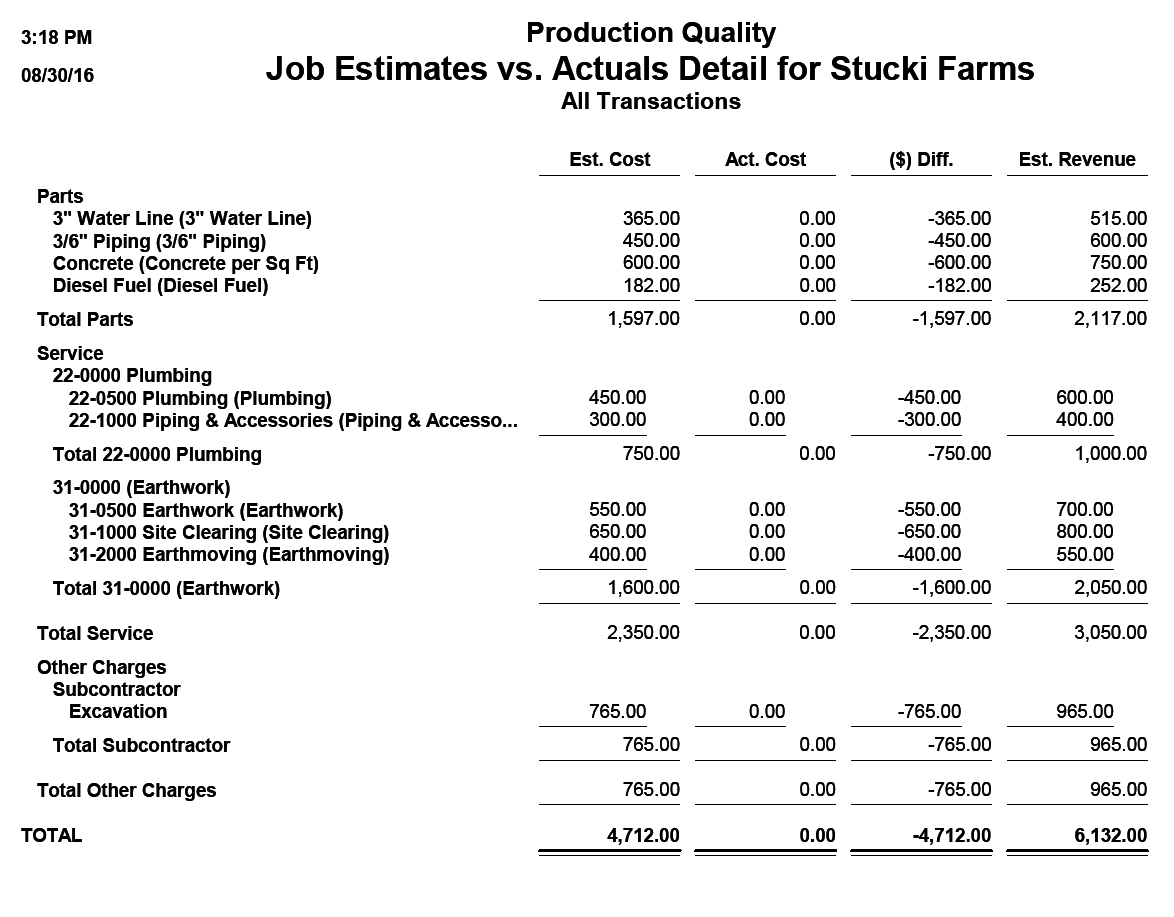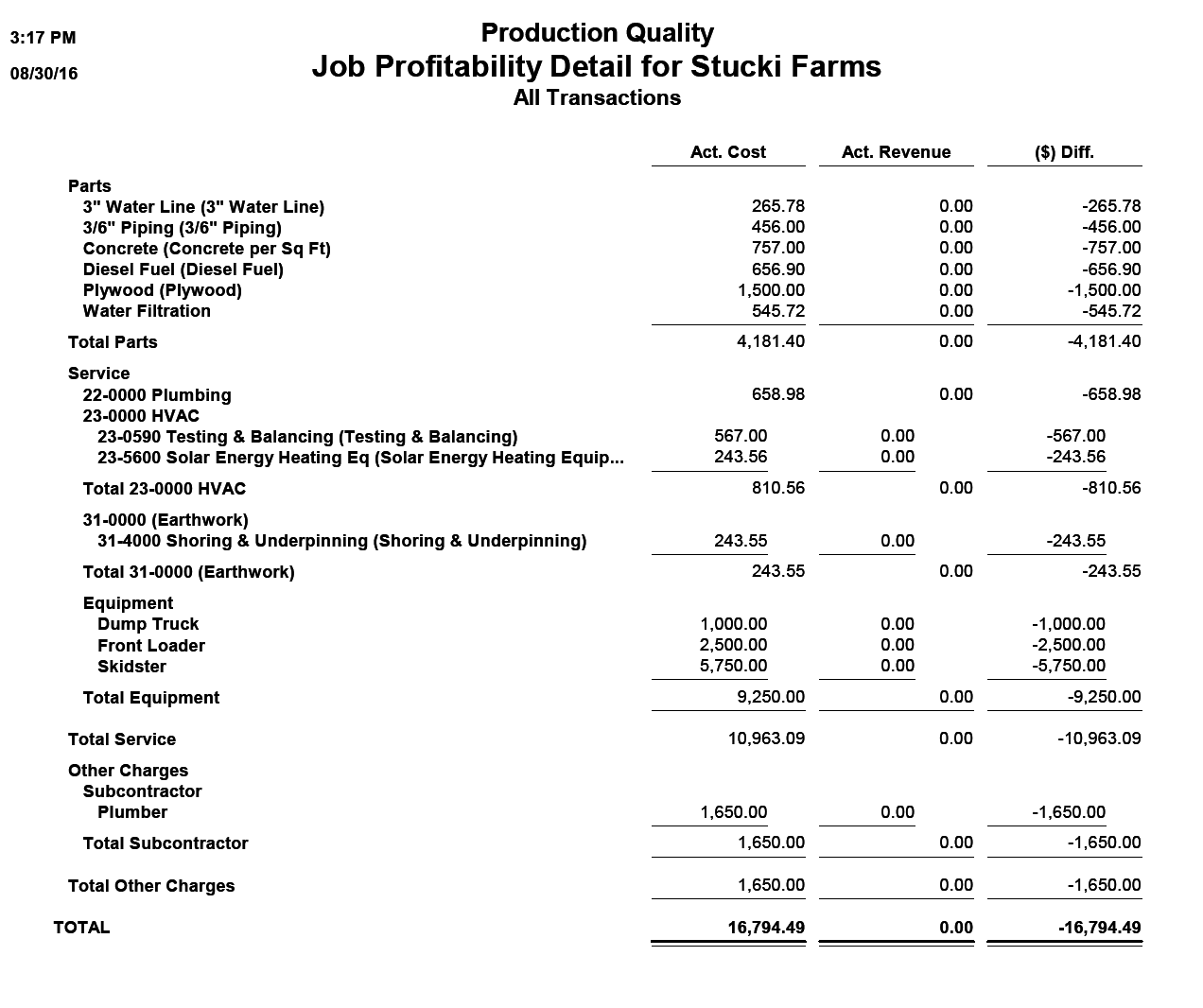
Where is the value of job costing in Construction? Businesses gauge their success by measuring profitability. Ensuring your organization is profitable requires a general knowledge and ability to track expenses and income for each job. Ultimately if expenses are less than income, then your business is making money. Instead of tracking the generalities, track the specific income and expense for each item. Your ability to track the details of specific items and associate the income or expense with a particular task will help you understand better your profit and loss. With a greater understanding of costs and the related items, you create an opportunity to have more accurate and useful estimates, budgets and ultimately a competitive advantage.
As a job costing example, let’s consider a plumber who expects to have $1,000 in materials expense for a particular project. At the end of the job, it turns out there was $1,400 in materials expense. If the plumber only tracked the general expenses, all that is transparent is what cost exceeded the estimate. Rather than just estimating $1,000 in materials, the plumber should have expected to have $450 in ¾” pipe, $350 in 1” pipe and $200 in faucet/accessories. With more detailed information, the job costing report can compare the cost of each item with the expected cost. How can the plumber use QuickBooks to achieve this level of detail in his job costing? In an ideal job costing report, expenses for direct materials and direct labor are collected separately and highlight the items that are driving the costs.
Get real-time data and accurate job costing with busybusy! Click here to schedule a free demo!

Job Costing in Quickbooks
There are multiple ways to look at job costing in QuickBooks. A common approach is to use the profit and loss by job report in QuickBooks, which is based on accounts that are assigned to bills and expenses. This report allows you to compare revenue with expenses, and it shows the overall profit or loss on a particular job. Unless you include individual expenses on each account, this report will not disclose the needed detail. The need for more detail is why the use of a QuickBooks job costing report is beneficial. The QuickBooks reports populate from expenses assigned to items on the item list. This method of data entry allows the use of specific items for job costing reports while maintaining the proper expense account.
To illustrate job costing for direct materials, consider a materials expense account. Entering bills under a materials expense will allow the aggregate amount to be viewed but specific items, which compile the expense, are not. Using QuickBooks Items as a method of entering bills allows the “materials expense” to be split between the specific materials. QuickBooks Items allow material expenses to be viewable in a job costing report. The use of QuickBooks Items will still compile the correct materials expense account for proper financial reporting but will increase the benefit of managerial cost accounting.

The same principle applies to tracking direct labor. If payroll and time are tracked in QuickBooks, it is possible to expense the labor spent for each item toward a specific job. When entering time into a timesheet, add the job and service item (Labor Code or Cost Code) in addition to simply adding the payroll item. When the payroll checks are cut, the expenses and labor cost for each service item and job will be viewable under the job costing reports. For this type of job costing to be accurate, there must be a way of tracking the time spent on each task for each job. With the emergence of technology such as the busybusy Mobile Time Clock App, the ability to track time for each job, with the addition of the task or service item, is possible. Tracking the time for each task and job down to the exact minute allows for the most accurate allocation of labor costs.
For more information about busybusy, visit the company’s website at www.busybusy.com, and to schedule a free demo today click here.











